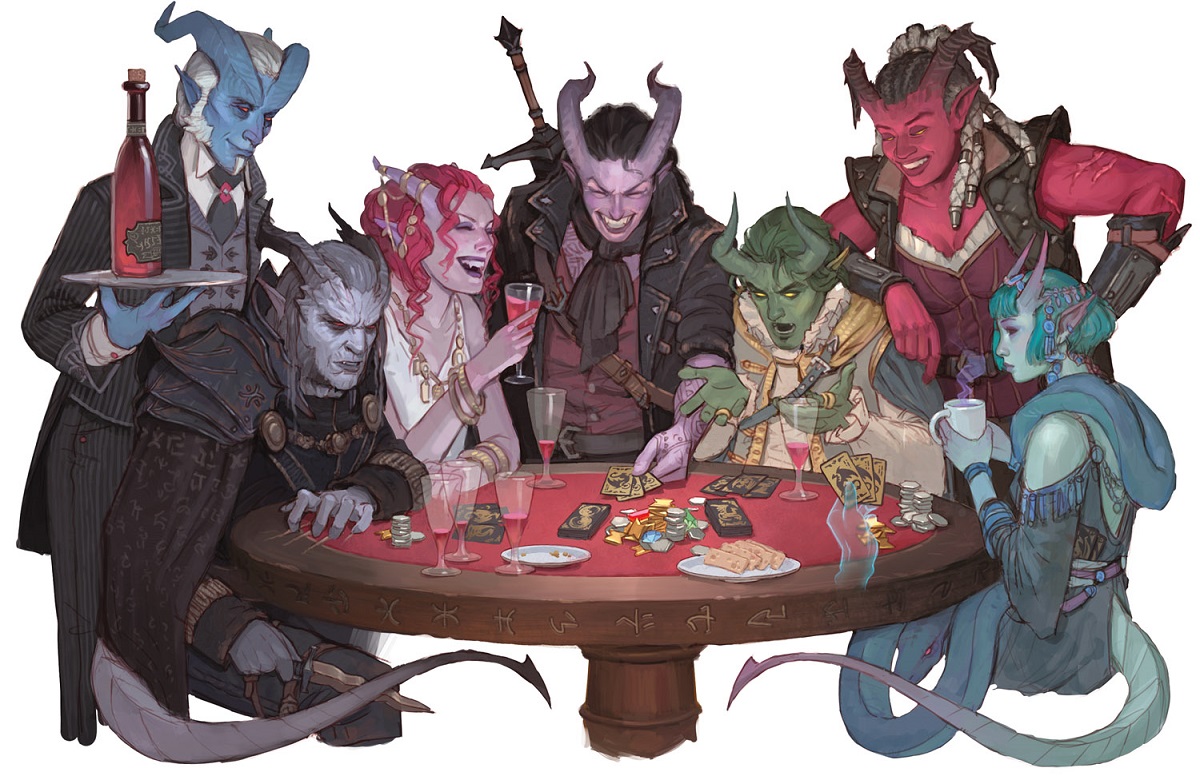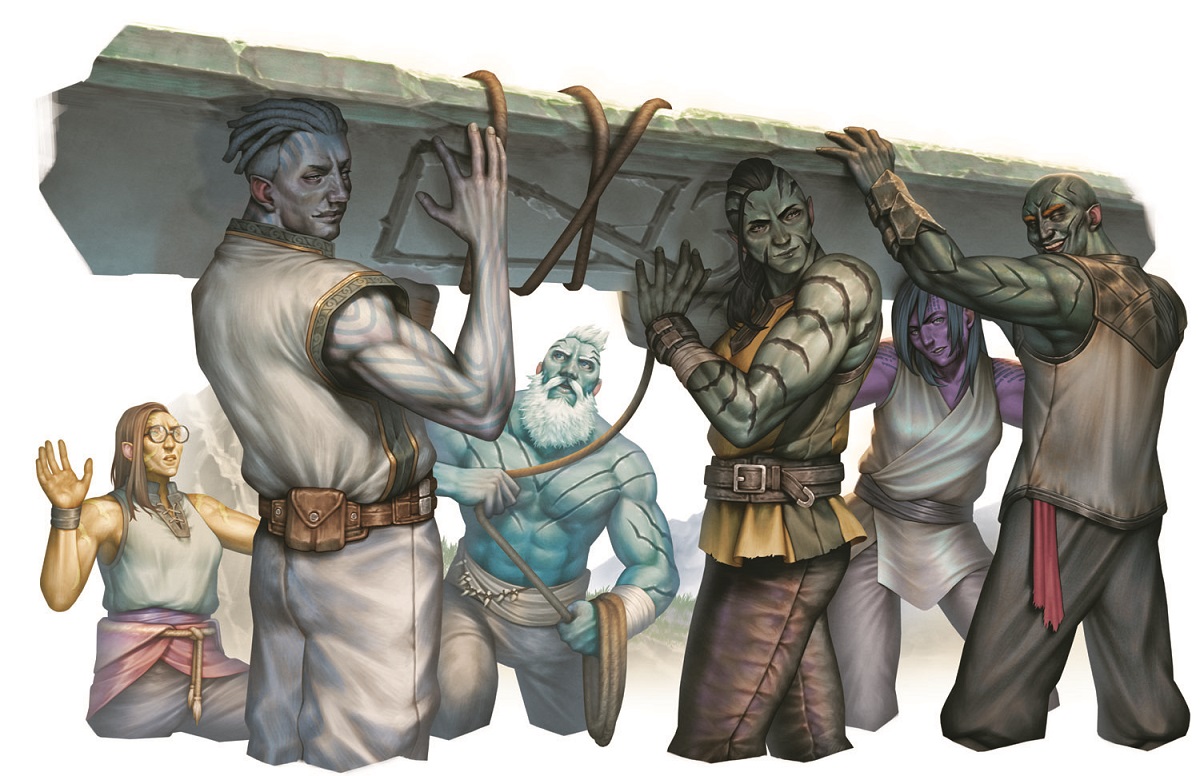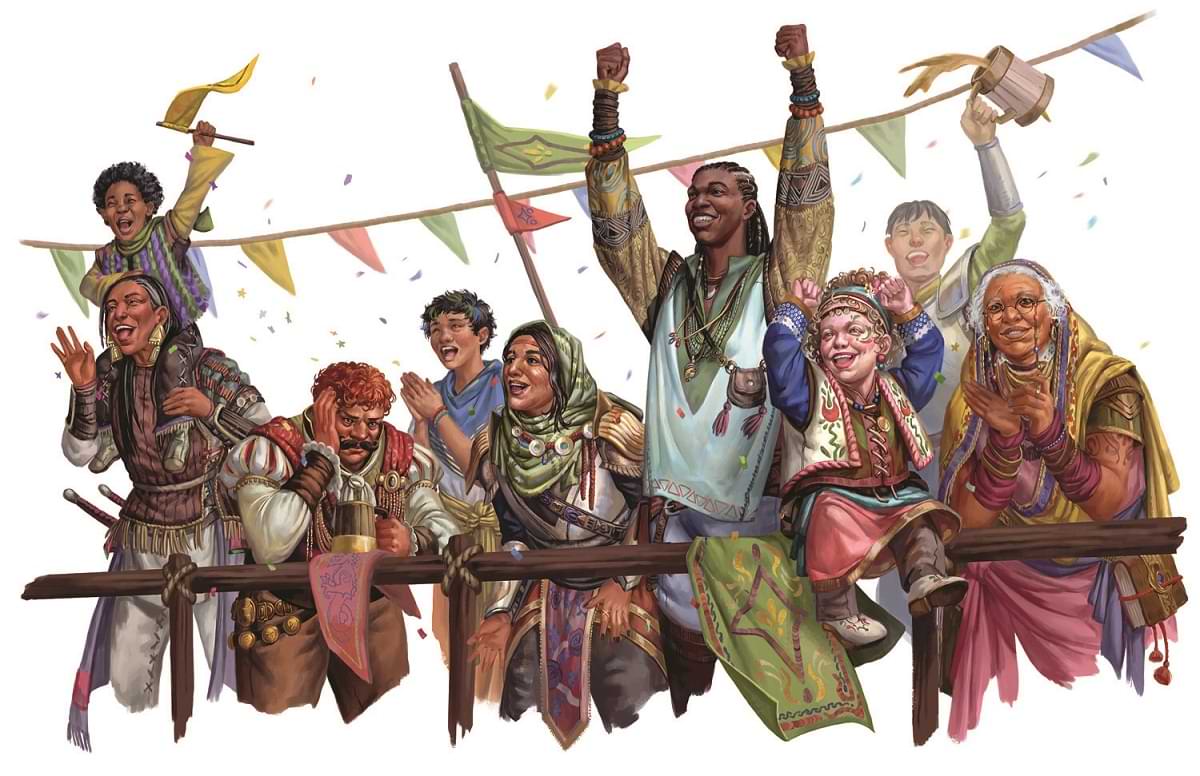
Wizards of the Coast has said the upcoming Dungeons & Dragons rules revisions will be compatible with 5th edition rather than a replacement for it, and is calling the revised core rulebooks the "2024" editions. If you're a veteran of the edition wars, they seem more like 4th edition's "Essentials" line than 3rd edition's complete replacement by 3.5.
The latest update on D&D Beyond covers the 10 species players will be able to choose from in the 2024 Player's Handbook. While mostly familiar, there are a few options that weren't in the 2014 rulebook. Aasimar and goliaths are both core choices now, and half-orcs have been replaced by just plain orcs.
Aasimar are mortals of celestial descent, and though never as popular as their counterpart tieflings—mortals of fiendish descent—it makes sense to have both in the same book. And the upgrade from half-orcs to orcs fits with the removal of half-elves as a mechanically distinct choice. In the playtest, players who wanted to play characters of mixed descent were advised to "determine which of those Race options provides your game traits: Size, Speed, and special traits. You can then mix and match visual characteristics—color, ear shape, and the like—of the two options." That may change in the final version, of course.
Goliaths, who are related to giants, get to choose an ancestry. "For example," says the blog, "a descendant of Fire Giants can add an additional d10 of Fire damage to an attack roll. A Goliath with Stone Giant ancestry can use a Reaction when you take damage to roll a d12, add your Constitution modifier, and reduce your damage by that amount. Each of these types of traits can be used a number of times equal to your Proficiency Bonus."
The more familiar options have also been tweaked, with an emphasis on removing weaknesses. It was always a bit of an oddity, and presumably a leftover from editions with a different design philosophy, that some species had glaring restrictions while others did not. The dark elf's sunlight sensitivity, which sure was a hassle when I played one, is simply gone like it was for drow player-characters in Baldur's Gate 3. The reduced speeds of gnomes and halflings is gone too—both now have a speed of 30 feet per round, like most species.

There's also a shift towards usefulness, with rarely used options replaced by ones more likely to be used. The dwarf's stonecunning, which only came up when making a History check "related to the origin of stonework," now gives dwarves the ability to use tremorsense when standing on stone surfaces, meaning they can detect invisible creatures and don't have to worry about being blinded. The dragonborn's breath weapon can be shaped rather than being a dangerously indiscriminate cone, and doesn't use up your entire action if you have multiple attacks. Instead of being slightly better at hiding, wood elves now get the Druidcraft cantrip. And so on.
"When working on the revisions for each of the species for the 2024 Player’s Handbook," the blog says, "a decision was made to focus on what the fantasy of each species is. Dwarves were given enhanced Stonecunning and Darkvision to emphasize their legacy of toiling away in mountain mines and kingdoms. Goliaths lean much more heavily into their specific lineages to reflect being the descendants of Giants as we understand them in D&D. Dragonborn were given the ability to access wings because flight is absolutely one of the coolest things about dragons."
Don't worry, the wings aren't permanent. Dragonborn can only use them to fly for 10 minutes, and get them at level 5, which is when wizards get access to the Fly spell. So it's not going to break your game—or at least it won't break your game any more than having a wizard in the party will.
As previously announced, the 2024 rules won't tie ability scores to species. Instead, they'll be modified based on your chosen background—a function of nurture rather than nature. "This makes backgrounds more important to character creation as the part of your character's history where they honed their skills and abilities. The way ability score adjustments work for 2024 backgrounds is that each background has three ability scores tied to it. You can choose to add +2 to one of those ability scores and +1 to another, or add +1 to all three. For example, the Farmer background gives you Strength, Constitution, and Wisdom to choose from. The Wayfarer background gives you Dexterity, Wisdom, and Charisma."

Finally, good old humans work more like the more popular "variant human" rule, getting a free feat and skill proficiency. "By emphasizing human resourcefulness and versatility in their traits," the blog explains, "the 2024 core rules portray humans as they're seen in stories like The Lord of the Rings or The Witcher, or even in sci-fi tales like Star Trek, never content to stay in one place, always eager to learn, grow, and explore."
The 2024 Player's Handbook is due out on September 17, with the 2024 Dungeon Master's Guide to follow on November 12, and the 2024 Monster Manual on February 18. Yes, that is actually in 2025.







